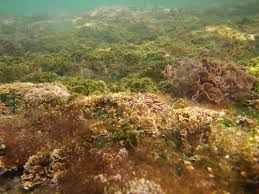Algal Biotechnology – Botany Notes – For W.B.C.S. Examination.
শৈবালের জৈবপ্রযুক্তি বায়োটেকনোলজি – উদ্ভিদবিদ্যা নোট – WBCS পরীক্ষা।
Microalgae are a renewable source of feed, fuel and nutrition.Continue Reading Algal Biotechnology – Botany Notes – For W.B.C.S. Examination.
The Algae Biotechnology Group aims to sustainably produce biodiesel, protein-rich animal feed and other high value products from microalgae.
Microalgae are a great resource as they can be farmed without competing for arable land and food production. We find local strains that are efficient producers of lipids, crude protein and neutraceuticals (nutritional supplements), then optimise these by using adaptive evolution and metabolic engineering. Our lab takes a “Non-GM” approach to strain improvement, meaning we prefer not to genetically modify algae.
Our research outcomes are aimed at providing industry partners with cost effective algae products. Over the last decade, we have developed specific capabilities in the areas of:
- Identification and isolation (pure cultures from mixed cultures)
- Harvesting and collection
- Extraction of high value products (e.g. biomass, omega-3 fatty acids, carotenoids and phytosterols)
- Large scale cultivation
- Structural and operational design of low-cost, algae energy production modules.
Why algae?
Microalgae (algae) are easy to grow and rich in nutrients that promote good health.
The land used to grow algae can be non-arable land as long as it has access to a source of water (e.g. saline, brackish or wastewater). We have demonstrated algae cultivation in laboratories, on rooftop demonstration facilities, and most recently, at our 250,000-L Algae Energy Farm.
Algae are a cost-effective source of producing fuel, feed, and neutraceuticals all year round with minimal use of land. For example, oil yields from microalgae are approximately 10 times higher than from palm oil. This is an important prerequisite for large-scale commercial production of biofuels.
How many types of algae are there?
There are dozens of unique strains of algae grown all over the world. Some are more common (e.g. spirulina which has become a common additive for smoothies, for example) and others which are less common.
Our lab specializes in the identification, cultivation, and storage of several hundred strains of algae. We work with partners worldwide to select and grow the most appropriate algae for a particular application.
How do you cultivate algae?
We collect algae from both marine (salt water) and freshwater environments, culture and characterise them by microscopy and use DNA extraction/sequencing and metabolite analysis (including lipid accumulation profiles) to identify the best application for specific strains.
The most promising algae are then used in an adaptive evolution (mutagenesis/selection) experiment to select for algae with certain attributes (e.g. fast growth or high lipid accumulation properties).
We use bioprocess engineering in facilities for algae cultivation and maximum lipid accumulation. We then scale up algae cultures and after extensive outdoor testing at pilot scale, algae are grown at large scale in our Algae Energy Farm at Pinjarra Hills.
What can you use the algae for?
Our development of new improved microalgae strains aims to maximise cost-returns for an algal biorefinery. There are many uses for algae and global demand for algae is increasing. In our experience, the main products created from algae are:
- Nutrient-based supplements such as omega-3 fatty acids
- Biodiesel
- Protein-rich cattle feed
- Phytosterols for the food industry
Where is the algae grown?
Large quantities of algae are required to make products such as protein-rich cattle feed, so large facilities are required to produce big yields of algae.
Our lab prefers a “low-tech” approach to algae cultivation and harvesting. We do not use industrial centrifuges or other high-cost engineering equipment. Our methods are carefully engineered – but with economic efficiency in mind.
We use a simple but efficient approach for low cost production of biodiesel, protein-rich biomass and nutraceuticals from microalgae. Our aim is to reduce construction and production costs and minimize on-site energy requirements.
Once optimised, each of these modules can be used for scale-up by using hundreds or thousands of modules as required by the demand and growth conditions in local communities.
Please subscribe here to get all future updates on this post/page/category/website


 +919674493673
+919674493673  mailus@wbcsmadeeasy.in
mailus@wbcsmadeeasy.in







































































































